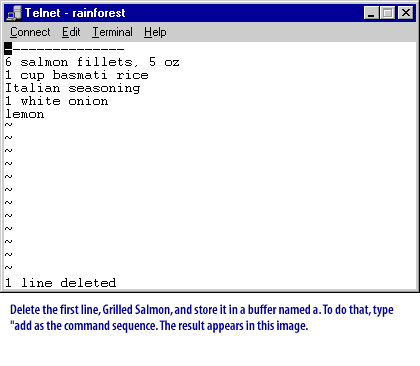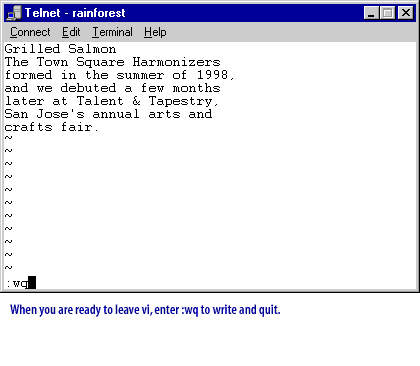Using named buffers to paste between files


To do that, type add as the command sequence. The result appears in this image





p: put (paste) the line(s) in the buffer into the text after the current line








p: put (paste) the line(s) in the buffer into the text after the current line
